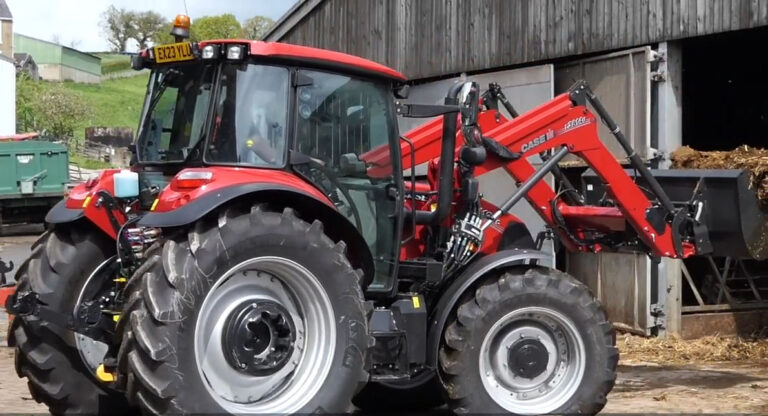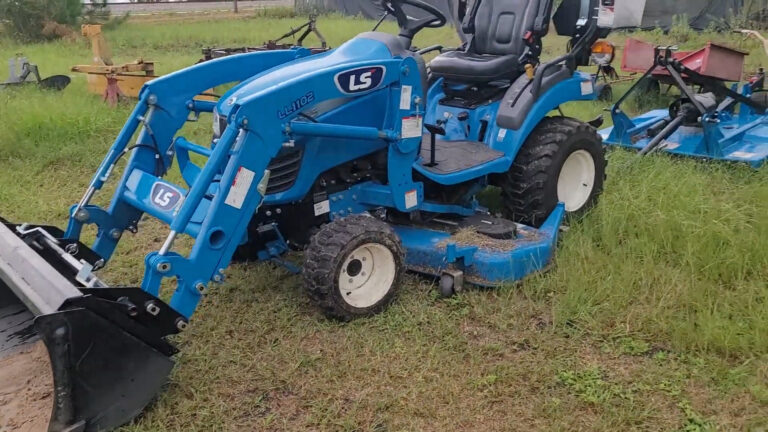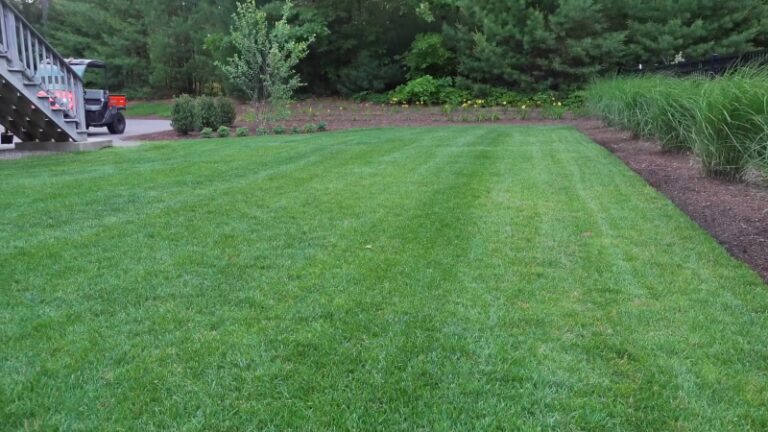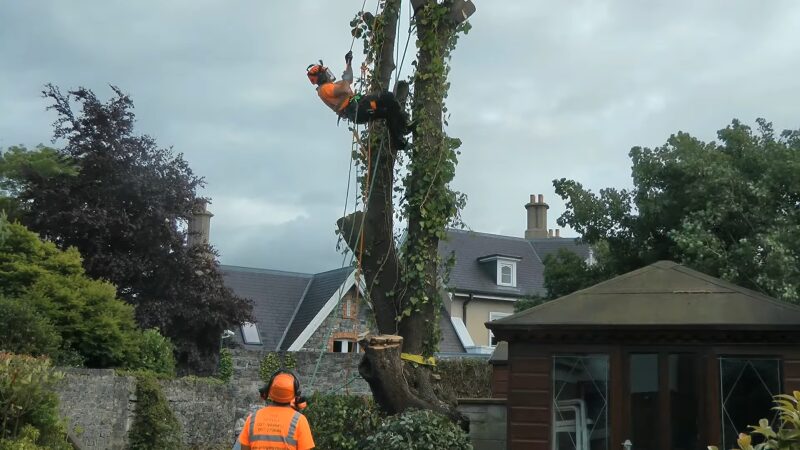Arborists play a critical role in maintaining the health and safety of our trees and landscapes.
To perform their job effectively and safely, having the right tools is essential.
The proper equipment not only boosts efficiency but also ensures safety while handling the demanding tasks involved in tree care.
Today, we will cover the top must-have tools for arborists in 2024.
1. Chainsaws
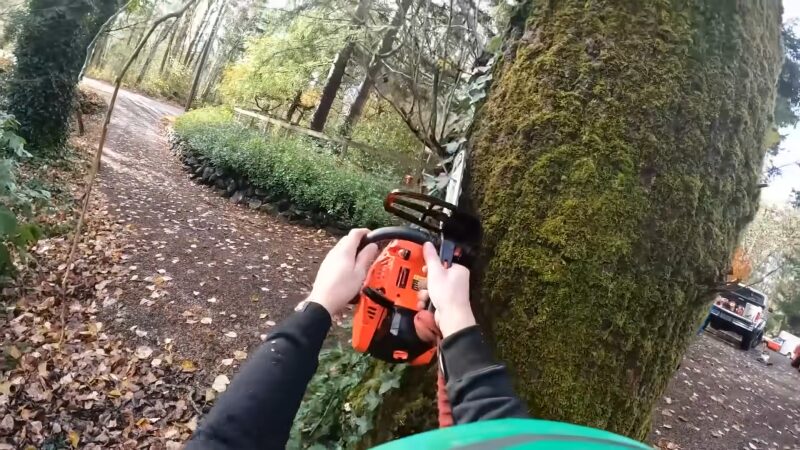
Chainsaws are the backbone of an arborist’s toolkit, making them indispensable for various tasks like cutting, pruning, and tree removal.
Arborists often select chainsaws based on their specific needs:
- Electric Chainsaws: Lightweight and quieter, ideal for smaller branches and residential areas.
- Gas-Powered Chainsaws: Heavier, but provide the necessary power for cutting through thicker, denser wood.
When using chainsaws, safety is a top priority. It’s essential to choose models that come with built-in safety features:
- Anti-Vibration Handles: Reduce fatigue during prolonged use.
- Automatic Chain Oilers: Ensure the chain remains lubricated for smoother cuts.
- Chain Brakes: Help prevent accidents by stopping the chain in case of a kickback.
Opting for chainsaws equipped with low-kickback chains can significantly reduce the risk of dangerous incidents.
To keep your chainsaw in optimal condition:
- Regular Maintenance: Sharpen the chain, check bar tension, and clean debris to prolong its lifespan.
- Proper Storage: Store in a dry, secure location to avoid rust and damage.
2. Handsaws & Pruning Tools
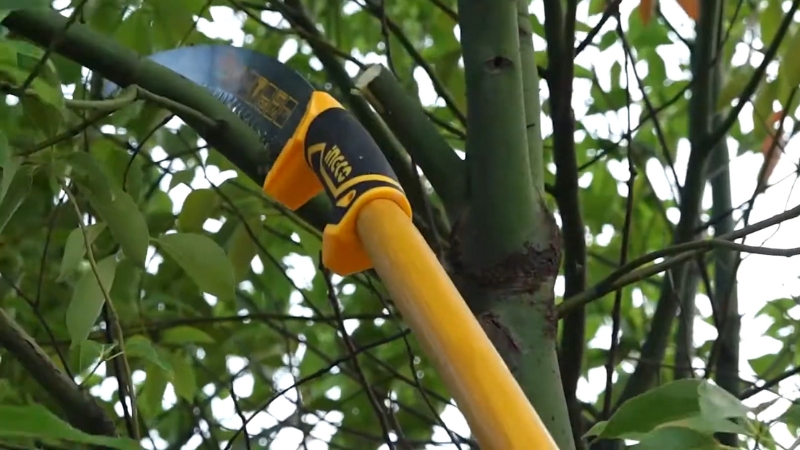
For precision cuts and detail work, handsaws and pruning tools are essential in an arborist’s toolkit. Unlike chainsaws, handsaws offer superior control, making them perfect for delicate trimming. Here’s why they are a go-to choice for arborists:
- Precision Cuts: A quality handsaw is ideal for smaller branches that don’t require the brute force of a chainsaw but still need clean, precise cuts.
- Versatility: Pruning shears and loppers are perfect for maintaining shrubs, bushes, and small trees, promoting healthy growth and preventing disease.
The benefits of using manual tools like handsaws and pruners extend beyond just their cutting capabilities:
- Quieter and Eco-Friendly: Manual tools operate silently, making them ideal for use in residential areas without disturbing the peace.
- Lightweight and Portable: Handsaws, shears, and loppers are easy to carry, allowing for quick access and convenience on job sites.
- No Fuel or Batteries Required: These tools don’t rely on external power sources, reducing both operational costs and environmental impact.
3. Cherry Picker (Tracked Spider Platforms)
One of the most versatile tools in an arborist’s arsenal is the cherry picker, with tracked spider platforms being the standout choice.
These specialized machines are engineered to reach high branches and hard-to-access areas, ensuring stability even on uneven or challenging terrain.
- Enhanced Safety: Unlike traditional ladders, cherry pickers provide a secure platform for working at heights, reducing the risk of falls and accidents.
- Stability on Rough Surfaces: The tracked design allows these platforms to maneuver across uneven ground, gravel, slopes, and even muddy conditions where standard equipment would struggle.
- Increased Efficiency: By using tracked spider platforms, arborists can easily access difficult areas, reducing the physical strain associated with climbing and manual pruning.
- Versatile Maneuverability: Ideal for both urban and rural settings, these platforms can navigate tight spaces and narrow passages, making them perfect for jobs in confined areas.
If you want to check some of these out, be sure to visit cpslift.com.
4. Pole Pruners
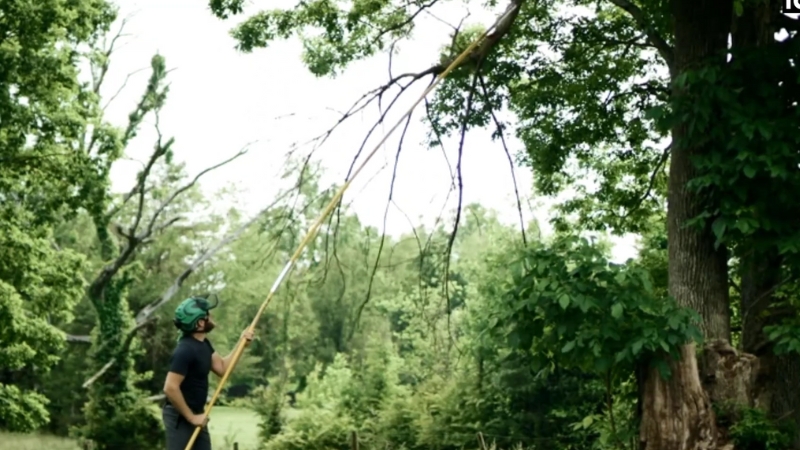
Reaching high branches safely is a frequent challenge for arborists.
Pole pruners provide a practical solution by allowing cuts to be made from the ground, completely eliminating the need for ladders.
These tools are especially valuable for pruning overhead branches that are otherwise hard to reach.
- Enhanced Safety: By staying grounded while cutting, arborists reduce the risk of falls and injuries that often accompany climbing.
- Versatility: Perfect for trimming branches in tight spaces or around power lines.
Modern pole pruners are available in both manual and powered options, offering flexibility based on the specific job:
- Manual Pole Pruners: Lightweight and easy to maneuver, ideal for smaller branches and precision cuts.
- Powered Pole Pruners: Provide the extra cutting force needed for thicker branches, saving time and effort on more substantial tasks.
Investing in a high-quality pole pruner ensures both safety and efficiency, especially when working in areas with limited space.
5. Tree Climbing Gear
Tree climbing is a critical skill for arborists, requiring specialized gear to ensure both safety and efficiency.
The right climbing kit allows arborists to securely ascend and descend trees, all while keeping both hands free for essential pruning and removal tasks.
Here’s a breakdown of the necessary gear:
- Harnesses: Provide secure attachment points for climbing and support during extended periods at height.
- Ropes: Strong, durable ropes are essential for safe climbing, positioning, and controlled descents.
- Carabiners: Used for quick, secure connections between ropes, harnesses, and other gear.
- Spikes (Climbing Spurs): Useful for ascending trees that are being removed but not recommended for trees that will remain healthy.
By investing in quality climbing gear, arborists can significantly improve their mobility, productivity, and safety when working in confined spaces or at great heights.
Safety Tips
- Inspect equipment before every use: Check harnesses, ropes, and carabiners for wear and tear to prevent accidents.
- Training is crucial: Proper training on using climbing gear helps prevent falls and ensures efficient operation.
- Use backup safety lines: Redundant safety lines provide an extra layer of protection in case the primary line fails.
6. Rigging Equipment
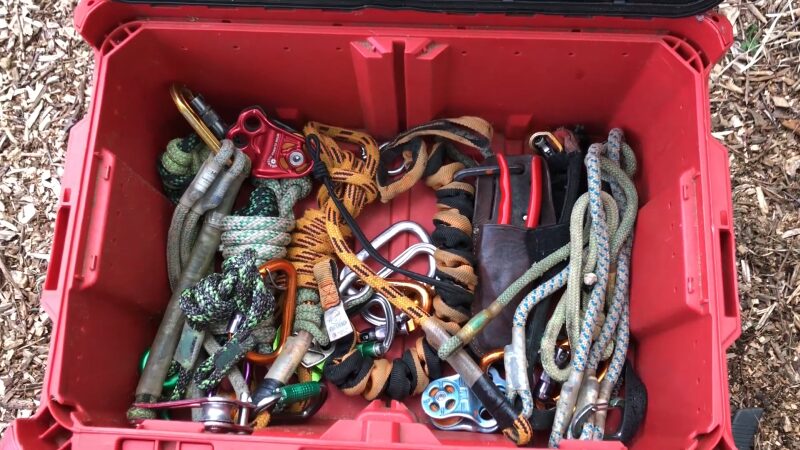
Rigging equipment is essential when dismantling large trees or lowering heavy branches safely.
Tools like rigging ropes, pulleys, and slings enable arborists to control the descent of heavy sections, significantly reducing the risk of property damage and injury.
Using rigging gear can execute controlled cuts, lowering branches gradually to prevent sudden drops and minimize impact.
Key benefits of rigging equipment:
- Controlled descent: Allows for safe, gradual lowering of branches.
- Minimizes property damage: Reduces the risk of falling debris damaging nearby structures or landscapes.
- Prevents injuries: Ensures safe handling of heavy branches, especially in confined spaces.
Proper rigging techniques not only protect the arborist but also help preserve the surrounding landscape. For complex removals in tight spaces, rigging equipment provides a reliable solution, allowing arborists to handle even the most challenging projects with precision.
Additional Safety Tips
- Inspect equipment regularly: Check ropes, pulleys, and slings for wear and tear before each use.
- Use the right tools: Select appropriate rigging gear based on the size and weight of the branches being handled.
- Follow safety protocols: Proper training in rigging techniques is crucial to avoid accidents during critical operations.
7. Stump Grinders
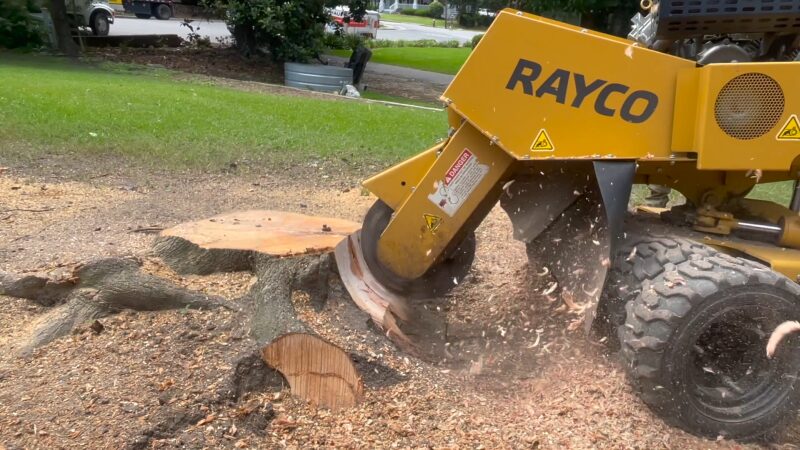
After cutting down a tree, the leftover stump can become both an eyesore and a potential tripping hazard. This is where stump grinders prove invaluable.
These powerful machines are designed to grind stumps down to below ground level, providing a clean, seamless finish that also prevents any chances of regrowth.
Key Benefits of Stump Grinders
- Grind stumps below ground level for a polished finish.
- Prevents regrowth, ensuring a clear area for landscaping.
- Saves time and reduces labor, making large jobs more manageable.
Safety Tips for Using Stump Grinders
- Always wear protective gear, including helmets, safety glasses, gloves, and steel-toe boots.
- Clear the area of debris to avoid flying objects.
- Check the grinder’s teeth for sharpness and ensure the machine is well-lubricated to keep it running smoothly.
8. Wood Chippers
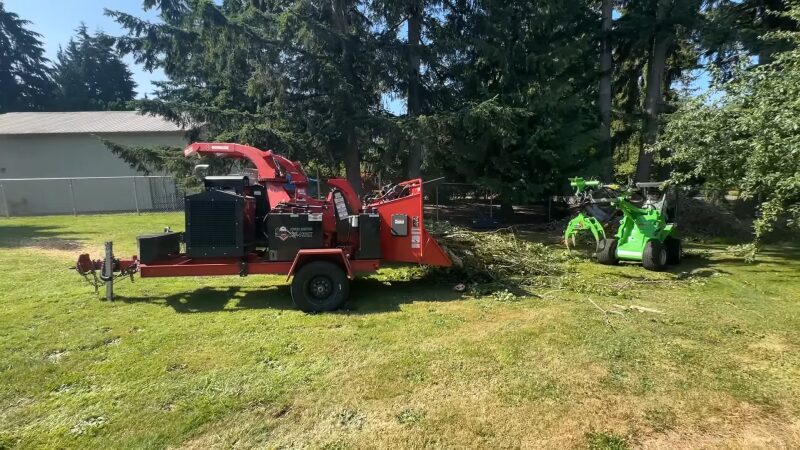
Wood chippers are an invaluable tool for transforming tree branches and debris into mulch, making the cleanup process efficient and eco-friendly.
These machines are ideal for recycling tree waste into valuable mulch that enhances landscaping efforts.
Arborists typically choose between electric and gas-powered models based on their project scale:
- Electric chippers: Perfect for smaller projects, quieter operation, and easy maintenance.
- Gas-powered chippers: Handle larger branches and heavy-duty tasks, offering more power for demanding jobs.
Using a wood chipper not only speeds up post-job cleanup but also promotes sustainable landscaping practices by reducing waste. By converting wood into mulch, arborists can support eco-friendly projects and reduce landfill contributions.
Safety Tips to Consider
- Wear protective gear like gloves, safety glasses, and ear protection.
- Avoid loose clothing that could get caught in the machine.
- Regularly inspect the chipper before each use to ensure it’s in good working condition.
9. Safety Gear
We have been providing arborists, climbers and foresters with protective chainsaw equipment for over 30 years. #livethetreelife#arborist #arbortec #treeworker pic.twitter.com/C0IAAwZPtl
— Arbortec Forestwear (@arbortecfw) September 6, 2024
No arborist’s toolkit is complete without the right safety gear, which plays a crucial role in preventing accidents and injuries on the job.
Proper protective equipment is not just an option, it’s a necessity for anyone working with hazardous tools and climbing trees.
- Helmets: Essential for protecting against falling branches and debris.
- Gloves: Durable, non-slip gloves provide protection from cuts and improve grip when handling tools.
- Protective Boots: Steel-toed boots with slip-resistant soles safeguard feet from sharp objects and ensure stability on uneven terrain.
- Safety Glasses: Shield eyes from flying wood chips, sawdust, and other debris.
- Hearing Protection: Earplugs or earmuffs reduce noise exposure from loud equipment like chainsaws and wood chippers.
In addition, chainsaw-resistant clothing, such as reinforced pants and jackets, can significantly reduce the risk of serious injury from accidental chainsaw contact.
This specialized gear is designed to stop chainsaws quickly, providing an extra layer of safety.
Other essential safety practices include:
- Inspecting equipment regularly to identify any wear and tear that could compromise safety.
- Using the appropriate tool for each task to avoid unnecessary risks.
- Following best safety protocols to ensure every job is completed without incident.
10. Wedges & Felling Tools
Felling trees safely requires a precise set of tools, with wedges and other specialized equipment playing a crucial role.
These tools are essential for arborists to control the direction of tree falls, ensuring that the tree lands exactly where intended, even in confined spaces.
- Control of Direction: Wedges are vital in guiding the tree’s fall to prevent damage to nearby structures and reduce the risk of accidents.
- Chainsaw Pinch Prevention: By using wedges, arborists can avoid chainsaw pinching, which can occur if the tree shifts unexpectedly during cutting. This ensures smoother, uninterrupted cuts.
For manual tree removal, felling axes are indispensable. These tools provide excellent control over the cutting process, allowing for precise, controlled cuts when a chainsaw isn’t feasible or necessary.
- Manual Precision: Felling axes are ideal for small to medium trees, offering a high degree of control for strategic cuts.
- Versatility in Tight Spaces: The combination of wedges and axes can be particularly effective in tight areas where mechanical equipment may not fit.
To maintain their effectiveness:
- Proper sharpening and inspection of wedges and axes are essential to ensure they stay in optimal condition.
- Knowing the correct techniques for using these tools helps maximize safety and efficiency during tree-felling operations.
Summary
Having the right tools can make all the difference for arborists, improving both safety and efficiency.
With well-maintained equipment, arborists can reclaim your outdoor space by expertly handling overgrown trees or hazardous branches.
Investing in high-quality equipment, like cherry pickers and safety gear, not only boosts productivity but also protects arborists from potential hazards.



